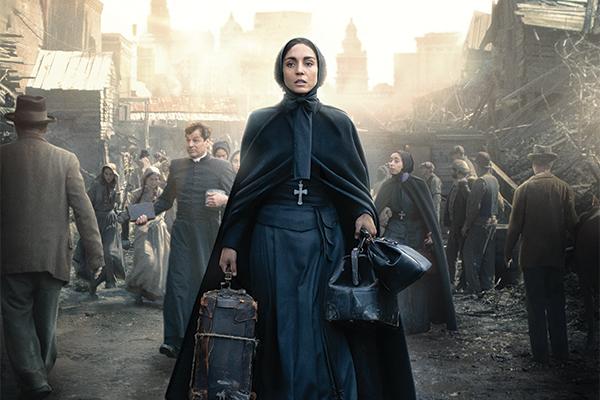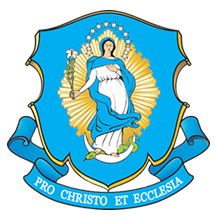
The story of Mother Cabrini is one instance of the story of women in the Church across her whole history, serving in imitation of Our Lady, the Handmaid of the Lord and the New Eve, hearing the Word of the Lord, answering God’s call, and doing extraordinary works by prayer and service to all in need.
By Chris Sparks
America is very fond of titans.
We love our titans of industry, figures like Andrew Carnegie, Thomas Edison, Henry Ford, J.P. Morgan, John D. Rockefeller, and Cornelius Vanderbilt.
We are fascinated by our titans of film and television, especially those from the Golden Age of cinema, like Bette Davis, Humphrey Bogart, Katharine Hepburn, Gregory Peck, or Gary Cooper.
And we’re fond of extraordinary statesmen, figures like George Washington, Thomas Jefferson, Theodore Roosevelt and Abraham Lincoln, all of whom we’ve featured in titanic sculptures at Mount Rushmore.
Thanks be to God, we’ve had titans of sanctity, as well, in our nation’s relatively brief history. But many Americans probably don’t remember their names.
“Cabrini,” a new film from Angel Studios (who’ve also produced “The Chosen”) aims to change that.
Don’t miss it.
Extraordinary women
Before Mother Teresa of Calcutta, there was Mother Frances Xavier Cabrini (1850-1917), the first U.S. citizen to be canonized a saint. A model of the spirituality of trust and the works of mercy, the Italian-born founder of the Missionary Sisters of the Sacred Heart established an “empire of hope,” beginning in New York City and expanding into a network of orphanages, hospitals, and other charitable works across the globe – all in spite of illness, American xenophobia, and every obstacle.
Her story has been told beautifully in “Cabrini,” now showing in theaters everywhere.
I watched the movie last Friday night when it opened on International Women’s Day, March 8. The movie was proof of what I already knew: We Catholics have in our communion of saints some of the most extraordinary women in world history, and their stories absolutely deserve to be remembered and celebrated.
A model for us all
Mother Cabrini was positively, consistently heroic throughout her life, enduring serious illness rather like her fellow saint, St. Faustina Kowalska, to persist in her religious vocation, serve the poorest of the poor several generations before Mother Teresa began her work, and overcome every obstacle to serve the Divine Mercy.
In the case of Mother Cabrini, her work was to create one of the largest charitable networks in world history to that point in time. In spite of the limitations her neighbors attempted to impose on her because of she was Italian, a woman, a Catholic, or a foreigner, Mother Cabrini was innocent as a dove and wise as a serpent (see Mt 10:16), as Jesus tells us to be. She carried her cross (and the crosses of many others, as well!).
Historical reality
Happily, this new film allows Mother Cabrini to be a saint. It does not force onto her the doubts or questions of the modern world, a world that has forgotten that sanctity is not an imaginary ideal, but a historical reality, a fact of the Catholic Church’s existence, sacramental practice, and service to those in need.
The movie does not rewrite Mother Cabrini’s biography to make her more palatable to modern viewers, but rather allows her religious vocation, her Catholicism, and her life with her sisters to frame the narrative of her struggle with American authorities and attitudes, as well as the understandable caution of some at the Holy See when confronted by a founder of a religious community with few earthly means and enormous plans for expansion.
Remember our history
The story of Mother Cabrini is one instance of the story of women in the Church across her whole history, serving in imitation of Our Lady, the Handmaid of the Lord and the New Eve, hearing the Word of the Lord, answering God’s call, and doing extraordinary works by prayer and service to all in need.
Her heroic persistence, her prophetic determination, and her respect for authorities, shown as she continues to deal with the hierarchies of the world and of the Church, even after receiving some ultimately mistaken “No’s” — all of this serves as a model for Catholic women and all of us today.
Well-acted (Cristiana Dell’Anna in the title role is a revelation), well edited, well-composed, the movie offers to us today what then-Cardinal Ratzinger once called the two great arguments for the truth of the Catholic faith: beauty and the saints.
Inspiration
Do your bit to remember the life and work of a tremendous saint and servant of God and neighbor. Go see this movie. Let the story of Mother Cabrini inspire you, and give you hope in these dark times we endure today. Remember that the saints are real, have lived in similarly hard times, and have changed the world for the better again and again across our history.
The light shines, as it has always shone, in the darkness, and the darkness does not comprehend it (Jn 1:5).
Mother Cabrini, pray for us!
{shopmercy-ad}
















